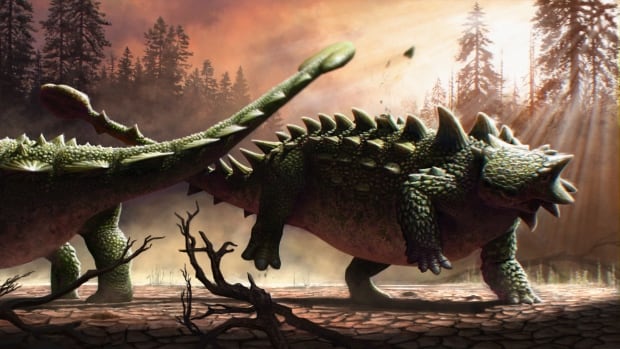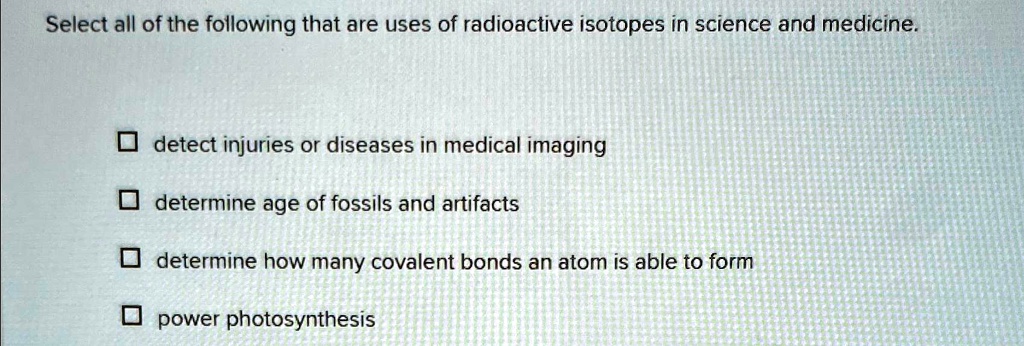How Dinosaurs Healed: Evidence of Injuries and Recovery in Fossils

Scars of Survival: How Dinosaurs Beat the Odds and Healed
The Mesozoic Era was a realm of titans, a world sculpted by colossal herbivores, lightning-fast predators, and the constant, unyielding struggle for survival. We often imagine these ancient giants locked in perpetual combat or fleeing from unimaginable threats. But what happens after the dust settles? Do these magnificent creatures simply fall? The fossil record, a silent storyteller, whispers a different tale – one of resilience, recovery, and the remarkable ability of dinosaurs to heal.
For decades, palaeontologists have unearthed fossilized remains that bear the undeniable hallmarks of past injuries. These aren’t mere nicks and scrapes; these are the deep scars of life-altering encounters, the testament to bones mended, tissues regenerated, and lives that persevered against formidable odds. The evidence suggests that dinosaurs, far from being fragile beings easily felled by a broken limb, possessed a robust capacity for healing, a biological fortitude that allowed them to continue their lives, hunt, evade, and even reproduce, despite grievous wounds.
The Fossilized Chronicles of Recovery
Imagine a Triceratops, its magnificent frill a shield and a weapon, bearing the jagged imprint of a Tyrannosaurus rex’s bite. Now, picture that same Triceratops, years later, with the bone growing around the wound, a testament to its survival. This is not hyperbole; it is the silent language of fossils.
Researchers have meticulously cataloged over 200 instances of healed injuries in dinosaur fossils. These are not fleeting pathologies but significant traumas that would have, in many cases, severely hampered the normal functions of life. Think of a fractured femur in a large sauropod, a creature that relied on its powerful limbs for locomotion and defense. The fact that the bone shows signs of remodeling, where new bone tissue has been laid down to bridge the gap, indicates a prolonged period of recovery.
While trackways offer glimpses into movement pathologies, the most compelling evidence for dinosaur healing lies in the bones themselves. These fossilized structures are a living library, preserving the intimate details of how ancient life overcame adversity.
A Look at the Evidence: What the Fossils Tell Us
The evidence for dinosaur healing isn’t confined to a single species or a singular type of injury. It spans a diverse range of pathologies and across numerous dinosaur groups.
| Injury Type | Affected Dinosaur Group | Fossil Evidence | Implication |
|---|---|---|---|
| Bite Marks (Healed) | Ceratopsians, Ornithopods | Pitted and remodeled bone where teeth once pierced. | Survival of attacks from large carnivores. |
| Fractured Limbs | Sauropods, Theropods | Fused bones, thickened callus formation. | Ability to bear weight and move despite broken appendages. |
| Tail Injuries | Various Herbivores | Twisted vertebrae, fused segments. | Recovery from severe impacts or predator attempts to grab. |
| Rib Fractures | Theropods, Ornithischians | Remodeled bone along fractured segments. | Resilience to crushing forces or blunt trauma. |
| Osteomyelitis (Suspected) | Various | Evidence of infection and subsequent bone repair. | Fighting off and recovering from internal infections. |
These examples illustrate the breadth of challenges dinosaurs faced and their capacity to overcome them. The presence of callus formation, a hallmark of bone healing in all vertebrates, is a particularly common and telling feature. This thickened, often irregular bone tissue is the body’s natural response to a fracture, indicating that the dinosaur lived long enough after the injury for this process to occur.
The Biological Orchestra of Healing
How did these ancient reptiles achieve such remarkable feats of recovery? While the exact mechanisms are still being explored, modern research offers tantalizing clues, drawing parallels between dinosaur physiology and that of living animals.
The recent discovery of preserved blood vessels within the rib bone of a famous Tyrannosaurus rex fossil, nicknamed “Scotty,” is a groundbreaking development. These microscopic structures are vital for transporting nutrients and oxygen to the site of an injury, facilitating the complex process of tissue repair. Their presence in such an ancient specimen suggests that dinosaurs possessed circulatory systems capable of supporting robust healing, potentially even more efficient than some modern reptiles.
The speed of dinosaur healing is also a subject of intense scientific interest. Some researchers hypothesize that their warm-bloodedness, or at least a more mesothermic (moderately warm-blooded) physiology, could have played a significant role. Warm-blooded animals generally exhibit faster metabolic rates, which can translate to quicker healing times compared to their cold-blooded counterparts. This would have given them a distinct advantage in surviving severe injuries, allowing them to recover and resume their activities more rapidly.
Furthermore, the very act of surviving significant trauma implies pain-mediated responses. Dinosaurs, like all sentient beings, likely experienced pain. Their ability to continue functioning, albeit perhaps with altered gait or behavior, suggests they possessed coping mechanisms and a physiological drive to overcome discomfort and continue living. This is a profound insight into their lived experience, painting a picture of creatures not just driven by instinct but by a will to survive.
Beyond the Roar: A Legacy of Resilience
The study of dinosaur healing is more than just an academic curiosity; it holds profound implications for our understanding of evolution and even for modern medicine. By unraveling the biological secrets of how these ancient giants mended broken bones and fought off infections, scientists are gaining valuable insights that could inform strategies for improving healing and recovery rates in other species, including our own.
The fossilized scars of dinosaurs are not just remnants of past violence; they are vibrant testaments to the enduring power of life, the intricate dance of biology, and the extraordinary capacity for resilience that has echoed through geological time. These ancient titans, though long extinct, continue to teach us about the fundamental forces that shape existence, reminding us that even in a world of giants and predators, survival and recovery are not just possibilities, but often, remarkable realities.

Additional Information
Scars of Survival: How Dinosaurs Healed from Devastating Injuries
The image of dinosaurs often conjures up fearsome predators locked in epic battles or colossal herbivores peacefully grazing. Yet, beneath the surface of this dramatic portrayal lies a testament to their resilience. Fossil evidence paints a vivid picture of these ancient creatures enduring and recovering from injuries that would have been life-threatening for many modern animals. Far from being fragile beings, many dinosaurs possessed remarkable healing capabilities, a fact revealed through the intricate stories etched into their fossilized bones.
A Bone-Deep Record of Recovery
The primary evidence for dinosaur healing comes from the direct examination of fossilized skeletons. Paleontologists have meticulously documented over 200 descriptions of healed injuries in dinosaur fossils that were severe enough to have significantly impacted their daily lives. These aren’t minor scrapes; these are fractures, shattered limbs, and even signs of infection that demonstrate a prolonged period of recovery.
These healed injuries manifest in several ways:
- Callus Formation: When a bone breaks, the body naturally attempts to repair it by laying down new bone tissue. In healed fractures, this new bone forms a visible thickening, or callus, around the break site. The shape, size, and texture of these calluses provide crucial clues about the nature of the original injury and the healing process. Some dinosaur calluses indicate that the bone was not perfectly aligned during healing, suggesting that while survival was achieved, perfect function may not have been restored.
- Remodeling of Bone Tissue: Over time, bone that has been broken and healed undergoes remodeling. Old or damaged bone is resorbed and replaced with new bone. This process can leave subtle but detectable changes in the microscopic structure of the fossilized bone, indicating that significant repair has occurred.
- Evidence of Infection and Inflammation: In some fossils, evidence of infection or inflammation around an injury site can be observed. The presence of new bone growth associated with these signs further supports the idea that the dinosaur survived the initial trauma and the subsequent complications.
Beyond Trackways: The Evidence Mounts
While fossilized bones offer direct evidence of healed injuries, the examination of dinosaur trackways provides a different perspective on their mobility and potential impairments. Interestingly, researchers have found far fewer reports of dinosaur trackways that provide evidence of pathologies affecting normal movement. This suggests that while severe injuries were survived, their impact on locomotion might not have always been immediately or obviously apparent in their gait. It’s possible that many dinosaurs adapted their movement or that trackways are less likely to preserve the subtle signs of a healed injury impacting stride.
What the Healing Tells Us: Insights into Dinosaur Physiology
The ability of dinosaurs to survive and heal from such grievous wounds offers fascinating insights into their physiology. The speed and effectiveness of their healing processes suggest certain biological advantages:
- Metabolic Rate and Warm-Bloodedness: One compelling hypothesis is that dinosaurs, particularly active predators like Tyrannosaurus rex, may have possessed higher metabolic rates, potentially even being warm-blooded (endothermic). Research suggests that rates of healing seem faster than for other reptiles, possibly aided by warm-bloodedness. A faster metabolism would translate to quicker cell regeneration and tissue repair, facilitating more robust recovery from injuries.
- Immune System Robustness: Surviving and healing from severe injuries, especially those with associated infection, implies a highly effective immune system. Dinosaurs likely had well-developed mechanisms to combat pathogens and manage inflammation, crucial for recovery.
The Case of “Scotty”: A Glimpse into Microscopic Healing
Recent discoveries are even beginning to shed light on the microscopic mechanisms of dinosaur healing. The remarkable finding of preserved blood vessels inside one of “Scotty’s” rib bones, a massive Tyrannosaurus rex, is a prime example. Blood vessels are essential for delivering oxygen and nutrients to injured tissues, a critical component of the healing process. The presence of these fossilized structures in T. rex offers a rare opportunity to study the cellular and molecular aspects of dinosaur recovery.
This research, published in journals like Scientific Reports, could lead to a deeper understanding of how dinosaurs’ bodies repaired themselves. Moreover, scientists believe that research into how dinosaur bone healed and the identification of chemical markers could help with the development of strategies to assist in the healing and recovery rates when it comes to injuries in other species, including our own.
Pain and Resilience: A Deeper Understanding
The survival of dinosaurs with severe injuries undeniably implies that they experienced pain-mediated responses. As stated in analyses of fossil evidence, many dinosaurs survived injuries that would have seriously hampered mobility, impacting their ability to hunt, escape predators, and engage in social interactions. This survival, and subsequent recovery, suggests they possessed a capacity to adapt to and manage pain. The fact that they could continue to live, feed, and reproduce after such trauma speaks volumes about their inherent toughness and the biological mechanisms that allowed them to persist.
In conclusion, the fossil record is a powerful testament to the resilience of dinosaurs. From the macro-level evidence of healed fractures to the microscopic insights from preserved blood vessels, these ancient creatures demonstrate a remarkable capacity for survival. Their ability to overcome devastating injuries not only paints a more nuanced picture of their lives but also offers potential lessons for modern medicine, reminding us of the extraordinary healing power that can reside within living organisms.
